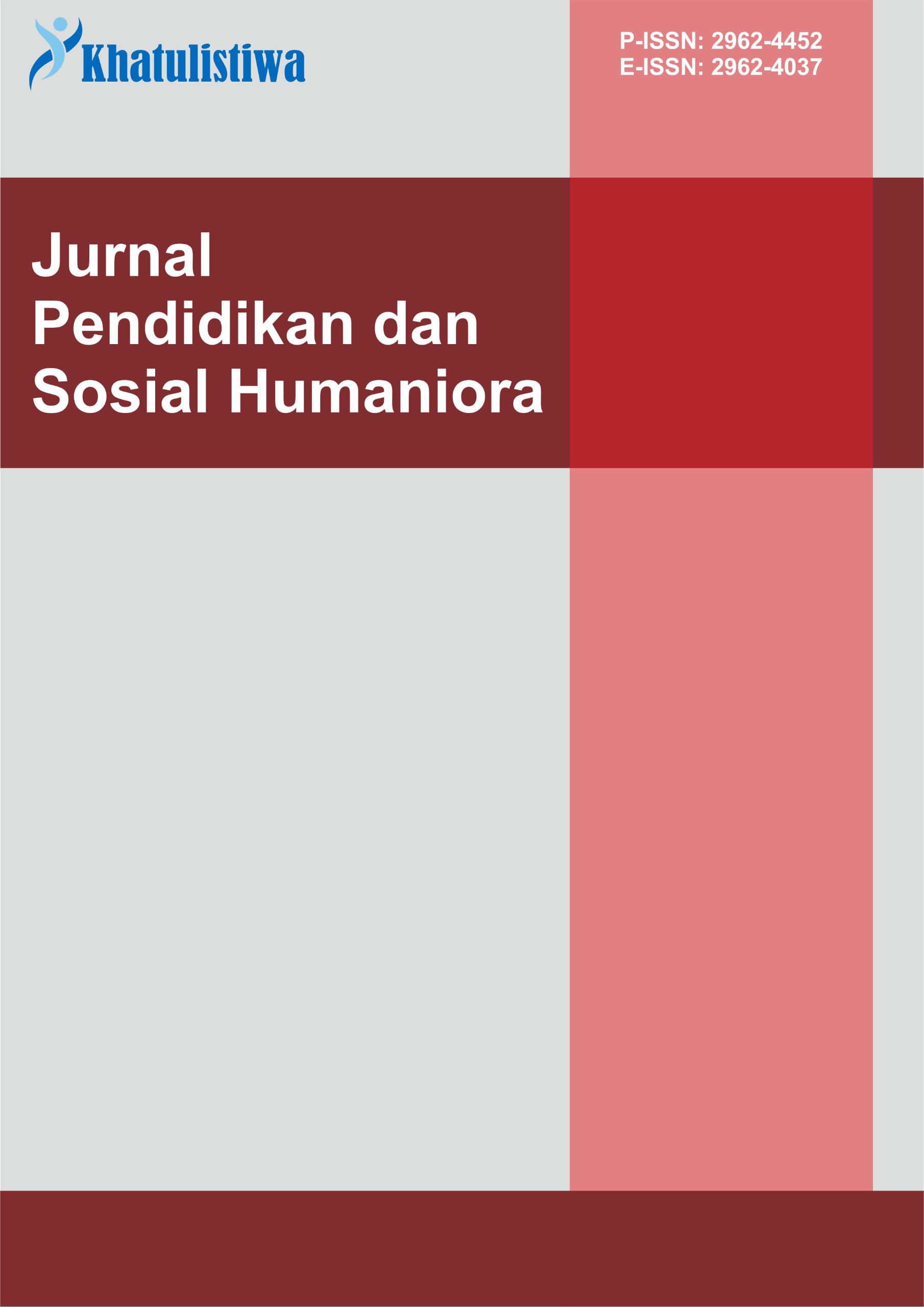Ironi Dan Humor Konten Youtube “Lapor Pak!” Dalam Perspektif Tindak Tutur
DOI:
https://doi.org/10.55606/khatulistiwa.v5i4.7707Keywords:
Discourse Analysis, Humor, Irony, Pragmatics, Speech ActsAbstract
Overall, the primary aim of this study is to explain the types of irony and humor found in the YouTube content Lapor Pak! using the perspective of speech act theory. Specifically, the research seeks to identify the types of locutionary, illocutionary, and perlocutionary acts that form ironic and humorous utterances. This study also aims to contribute to the understanding of pragmatics, particularly within the context of digital communication. This research employs a qualitative approach using descriptive methods. The data source consists of utterance transcripts from several episodes of Lapor Pak! as aired on the Trans7 YouTube channel. Data collection techniques include observation, documentation, and noting utterances that contain elements of humor and irony. The collected data is then analyzed based on speech act theory to determine how irony and humor are constructed in the conversation. The results show that out of 20 utterances analyzed, 19 contained humorous elements and 5 contained irony, with some utterances featuring both simultaneously. The most dominant types found were verbal humor and verbal irony. From the perspective of speech acts, expressive acts were the most frequently used to construct both irony and humor, followed by representative and directive acts. This study concludes that the utterances in Lapor Pak! often use humor as a medium to convey messages through an expressive approach. Humor is not only intended to entertain but also functions as a subtle means of delivering social criticism, making the message more acceptable to the audience. Thus, this study highlights that speech acts in digital contexts like YouTube can serve as both effective and entertaining forms of communication.
References
Achsani, F. (2020). Bahasa humor dalam acara Bocah Ngapa(k) Ya Trans 7.
Ayuningtyas, D., Misnaniarti, M., & Rayhani, M. (2018). Humor dakwah KH. Anwar Zaid dalam menumbuhkan kesehatan mental. Jurnal Ilmu Kesehatan Masyarakat, 9(1). https://doi.org/10.26553/jikm.2018.9.1.1-10
Bala, A. (2022). Kajian tentang hakikat, tindak tutur, konteks, dan muka dalam pragmatik (Vol. 3, Nomor 1).
Dian Safitri, R., & Mulyani, M. (2021a). Teori tindak tutur dalam studi pragmatik (Vol. 1, Nomor 1).
Dian Safitri, R., & Mulyani, M. (2021b). Teori tindak tutur dalam studi pragmatik (Vol. 1, Nomor 1).
Djatmika. (2016). Mengenal pragmatik yuk!? (Vol. 1). Pustaka Pelajar.
Fathul Maujud, H., & Sultan, M. A. (2019). Pragmatik: Teori dan analisis makna konteks dalam bahasa.
Hariyanto, A., & Putera Aditya. (2022). Konten kreator YouTube sebagai sumber penghasilan (Telaah kritis hukum ekonomi syari’ah).
Hartini, L., Saifullah, A. R., & Sudana, D. (2020). Linguistik forensik terhadap perbuatan tidak menyenangkan di media sosial (kajian pragmatik). DEIKSIS, 12(03), 259. https://doi.org/10.30998/deiksis.v12i03.5416
Heriansyah, N. P., Salsabila, K. D., & Firmansyah, D. (2024). Prinsip ironi dan prinsip kelakar dalam film Imperfect: Karier, Cinta, & Timbangan karya Ernest Prakasa. Wacana: Jurnal Bahasa, Seni, dan Pengajaran, 8(1), 38–46. https://doi.org/10.29407/jbsp.v8i1.21691
Herminingsih, H., Nurdin, N., & Saguni, F. (2022). Pengaruh YouTube sebagai media pembelajaran dalam perkembangan kognitif, afektif dan psikomotor siswa. https://kiiies50.uindatokarama.ac.id/
Jumanto. (2017). Pragmatik: Dunia linguistik tak selebar daun kelor (Edisi 2). Morfalingua.
Mardiatussaadah, E., Maspuroh, U., & Singaperbangsa Karawang Abstrak, U. (2024). Gaya bahasa ironi, sinisme, dan sarkasme pada kolom komentar Instagram @Mgdalenaf. Jurnal Ilmiah Wahana Pendidikan, 10(1), 336–345. https://doi.org/10.5281/zenodo.10466389
Nasarudin, Yulisna, R., Sartika, R., Sari, A. W., Satini, R., Anggraini, D., Nurjannah, Susanti, S., Rahmi, A., Saerudin, S., Wachyudi, K., Arisandi, V., & Febriana, N. (2024). Pragmatik (A. Susanto, Ed.; 1 ed., Vol. 1). Yayasan Tri Edukasi Ilmiah.
Panggalo, S. (2022). Kajian deskriptif tentang stilistika dan pragmatik. http://jiip.stkipyapisdompu.ac.id
Purba, A. (2011). Tindak tutur dan peristiwa tutur, 1(1), 77–91.
Rahardi, K., Setyaningsih, Y., & Dewi, R. P. (2016). Pragmatik: Fenomena kesantunan berbahasa (S. Saat & W. Hardani, Ed.). PT. Gelora Aksara Pratama.
Rijali, A. (2018). Analisis data kualitatif (Vol. 17, Nomor 33).
Saifudin, A. (2019). Teori tindak tutur dalam studi linguistik pragmatik.
Utami, H. R. (2021). Kajian pragmatik dalam karya sastra. Prodi Pendidikan Bahasa dan Sastra Indonesia, Fakultas Keguruan dan Ilmu Pendidikan-Universitas Maria Kudus; Balai Bahasa Provinsi Jawa Tengah.
Wardani, O. P., & Turahmat. (2021). Ironi dalam siniar Deddy Corbuzier yang bertema “Covid 19” (Vol. 4, Nomor 1).
Warsah, I., Karolina, A., Satriya, Y., & Hardiyanti, D. (2020). Sense of humor relevansinya terhadap teaching style (Telaah Psikologi Pendidikan Islam). http://ejournal.iaiibrahimy.ac.id/index.php/arrisalah/index
Wicaksana, I. M. (2023). Analisis tindak tutur direktif pada tuturan anak usia 7–10 tahun di Desa Sumber, Kecamatan Sumber, Kabupaten Rembang.
Yuliana, D. (2018). An analysis of the types and functions of irony expressions in Twitter: Semantic approach [Thesis].
Downloads
Published
How to Cite
Issue
Section
License
Copyright (c) 2025 Khatulistiwa: Jurnal Pendidikan dan Sosial Humaniora

This work is licensed under a Creative Commons Attribution-ShareAlike 4.0 International License.








